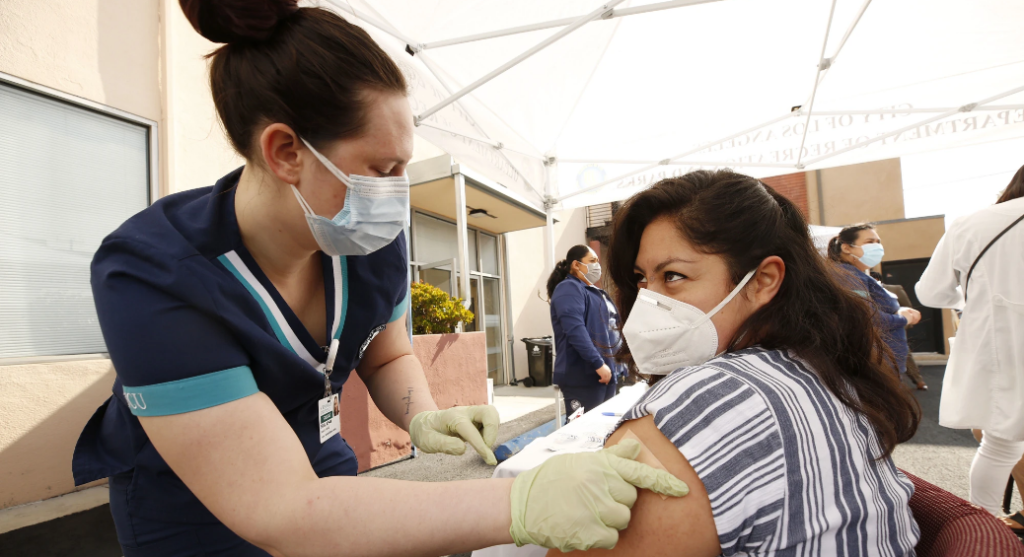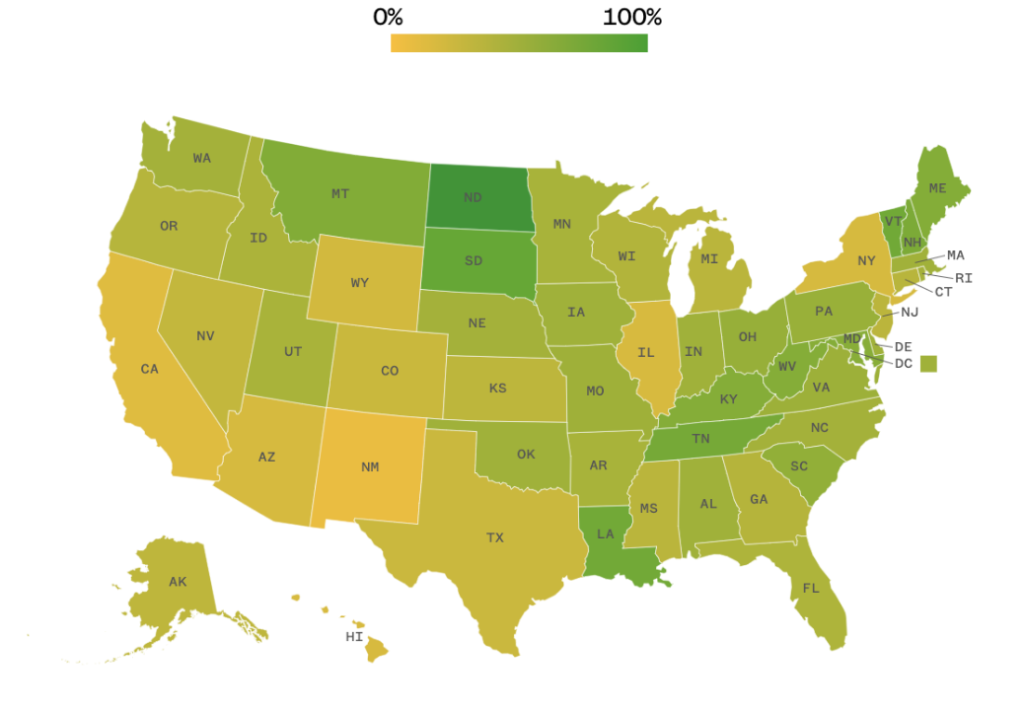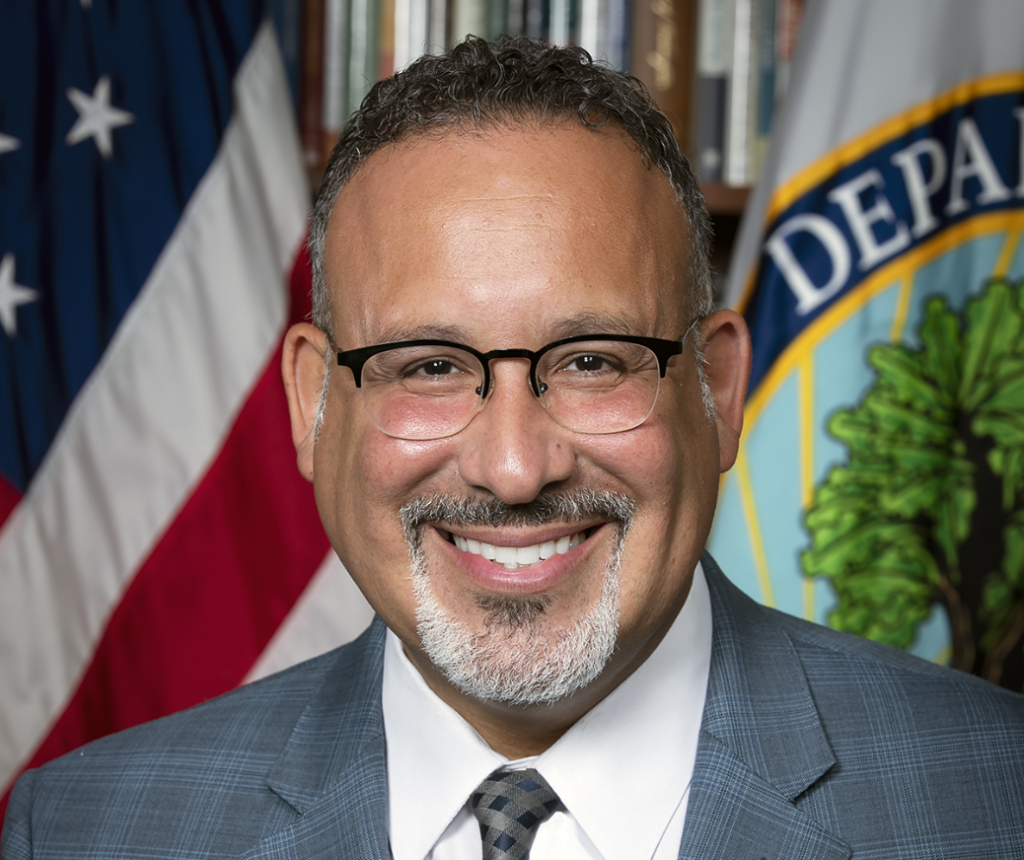OCTOBER, 2021
U.S. Latino business owners continue to be
optimistic about the future.
Nearly one-third of the attendees at L’ATTITUDE 2021 last month said they own their own business. Of those, 57% are employer businesses and 43% are owner-operated. In a survey of attendees conducted by L’ATTITUDE, these business owners were asked which business goals are most important to them.
38% of those surveyed said that growing long-term financial security is their most important goal. The second most frequently sited goal is allowing for a balance of work and family, claimed by 26%. Building a family legacy was selected by 15%, while 12% chose giving back to my community.
When asked what percent of their business has been funded by the options presented, the average of all answers resulted in the following analysis:
- Self-funded = 81%
- Credit card = 18%
- Family & Friends = 10%
- Equity investment = 9%
Increasing access to capital through equity investments was a major topic at L’ATTITUDE. A report presented by Bain & Company demonstrated that our country is missing out on an estimated $1.4 trillion in annual GDP because lack of capital is preventing Latino-owned businesses from achieving revenue parity with white-owned businesses.
The L’ATTITUDE survey put an exclamation point on those findings when 92% said they could grow faster with more capital.
The optimism of U.S. Latino entrepreneurs and business owners was made clear by their answers to questions regarding their attitudes. 84% said they are optimistic about the role of Latinos in our country. 81% believe their future economic opportunities will get better, while 44% believe the overall economy will improve next year. However, these business owners were nearly evenly split in their response to the political and cultural situation, with one-third saying that will get better, one-third saying it will stay the same, and one-third believing it will get worse.
Nearly 9 in 10 respondents say they are optimistic about their personal financial status, and 82% say they are optimistic about their role in the New Mainstream Economy.
Voters appear to be overwhelmingly in favor
of immigration reform.
A recent bipartisan conducted by the American Business Immigration Coalition (ABIC) in 11 battleground states and 70 competitive House districts found, by a 3-to-1 margin, voter support for earned legalization and citizenship as part of the budget reconciliation bill.
In a recent email to its members, ABIC noted, “We’re still in it to win it! The economic and moral need for immigration reform is too great to ignore, and ABIC continues working with Congress to legalize our DREAMers, essential workers, Temporary Protected Status (TPS) holders and farm workers.”
Many voters are frustrated by inaction on immigration, and it appears that members of both parties would gain voter support if they enacted immigration reforms.
The ABIC memo went on to say, “The numbers tell the story: The Democratic Party can act boldly and the Republican Party should get serious about negotiating real solutions, and stop being held hostage by a small, angry, loud, radical minority within their Party.”
When the subject of immigration was discussed at L’ATTITUDE, Governor Larry Hogan of Maryland said, “As a nation we have to remember what made this nation great – we’re a nation of immigrants. We have to have a real immigration policy that makes sense.”
U.S. Latino vaccination rate is actually higher
than that of Anglo-Americans.
As of the first week in October, federal data from the Centers for Disease Control and Prevention (CDC) show that 78% of the adult population in the United States have received at least one dose of a COVID-19 vaccine.
Forty five states have reported race/ethnicity of people who received at least one dose of the vaccine. Overall, across these states, 54% of Anglo-Americans had received at least one COVID-19 vaccine dose compared to 51% for U.S. Latinos.
The most compelling data reported by the CDC, however, showed that vaccination rates are actually higher for U.S. Latinos when the analysis is limited to the population ages 12 and older who are currently eligible for the vaccines. Given that the U.S. Latino cohort is our country’s youngest cohort, accounting for age is critical to understanding the data correctly.
The CDC analysis found that among those eligible for the vaccine — ages 12 and older — as of October 4, 2021, 64% of U.S. Latinos had received at least one COVID-19 vaccine dose compared to 61% of Anglo-Americans.
Although federal and state data are available for vaccinations by race/ethnicity and age separately, only a handful of states report data in a way that allows for analysis of vaccination rates by race/ethnicity within age groups. Having data to understand those vaccination patterns will be particularly important when eligibility expands to children. Overall, comprehensive standardized data across states are vital to monitor and ensure equitable access to and uptake of the vaccine.
U.S. Latino population growth has outpaced
general population growth in every state
Over the past decade from 2010 to 2020, Utah was the fastest growing state in the West with a population growth of 18.4%. At the same time, however, the U.S. Latino population growth rate in that state was double that at 37.5%. That serves as just one example of the ubiquity of the growth of the U.S. Latino population. It is no longer accurate to think of California, Texas, and Florida as the major growth areas in our country.
Consider six other states not typically viewed as strongly Latino where that cohort’s growth has significantly outpaced total population growth. In North and South Dakota U.S. Latino population growth was nearly ten times that of the total population growth, and in Vermont and Louisiana it was nearly thirty times greater.
Today, nearly 70% of all U.S. Latinos were born in the U.S. According to the LDC 2021 Perceptions of Latinos in America report presented at L’ATTITUDE, on average non-Latino Americans think that only about one-third of U.S. Latinos were born here. Further, they believe that undocumented Latinos account for nearly three times as many Latinos in our country as is factual, which is only 13%.
Once one realizes the 21st century demographic reality of our country’s population growth, it becomes evident why 52% of our growth in home ownership is accounted for by U.S. Latinos. In fact, the U.S. Latino growth in small business formations, the U.S. Latino growth in our country’s workforce, and the U.S. Latino growth in GDP, are all larger than that of all other cohorts combined.
The velocity and trajectory of the U.S. Latino population growth, underlying this cohort’s GDP Growth now equal to the 7th largest economy in the world, demonstrates why a national focus on the New Mainstream Economy is essential to a robust and sustainable economic recovery in our country.
We hear a lot about the growing influence
of young Latinas. Then there’s the 105 year-old!
The Smithsonian American Art Museum is shining a spotlight on Carmen Herrera as one of ten women artists in its collection. Following are excerpts of a short story about her on the SAAM website, with illustrations by a woman student-illustrator from the Ringling College of Art and Design. You can view it here.
Carmen Herrera was born in Havana, Cuba, then lived in Paris before moving to New York City in 1952. She faced discrimination in the art world for being an immigrant and a woman.
Carmen moved from Havana, Cuba to New York City in her twenties and joined a community of budding artists. In 1948 she went to Paris hoping to find inspiration. There she came across an exhibition featuring abstract art by international artists, and as she described it said, “This is an eye-opener. This is what I want to do.”
She returned to her studio and expressed herself on canvas using only three colors, then eventually only two. Carmen wanted to find a new way to represent the modern experience. As she describes it, “I began a lifetime process of taking away what isn’t essential.”
Four years later, she returned to New York and found many male artists using similar techniques to hers were becoming famous. However, her work got no attention from galleries, collectors, or museums. A gallery owner is said to have told her, “Carmen, you can paint circles around the men artists, but I’m not giving you a show because you’re a woman.”
That, however, did not stop her from painting. As she says, “I kept going, I couldn’t stop.” Finally, at the age of 89 a famous collector purchased some of her art. Suddenly, galleries wanted to represent her and museums began collecting her paintings.
When Carmen arrived at one of her major solo shows in New York City at nearly 101 years old, tears streamed down her face as she finally felt recognized and seen. This remarkable Latina is still painting today at 105. She still can’t stop!
U.S. Secretary of Education, Miguel Cardona,
announces a suite of resources
to help educators support their students
The U.S. Department of Education has released a suite of resources to help educators support their students’ social and emotional wellbeing and mental health. These resources cover supports for students across early childhood, elementary and secondary schools, and higher education settings.
U.S. Secretary of Education Miguel Cardona said, “Amid the pandemic, we know that our students have experienced so much. We can’t unlock students’ potential unless we also address the needs they bring with them to the classroom each day. As educators, it’s our responsibility to ensure that we are helping to provide students with a strong social and emotional foundation so that they also can excel academically.”
Cardona went on to say, “More than 18 months into the COVID-19 pandemic, it is particularly important to acknowledge the pandemic’s impact on mental health at home and around the world, to present an opportunity for meaningful conversations about mental health, and to celebrate schools and other institutions that have found new and promising ways to provide mental health services to students.
As an educator, I understand the challenges we face, but also the incredible rewards of working to help students grow and thrive. To do that, we need to invest in teachers. We need to address teacher shortages by improving teacher preparation, strengthening pipelines for underrepresented teachers—including educators of color—and supporting current teachers.
We need to focus on the whole child and provide what every child needs to succeed. That means accelerating learning and building school communities where all students feel they belong. We need to leverage preschools, elementary and secondary schools, and communities so that students’ academic, social-emotional, physical, and mental health needs are met.
I’m proud that today, the U.S. Department of Education released a suite of resources to help educators support their students’ social and emotional wellbeing and mental health.”






